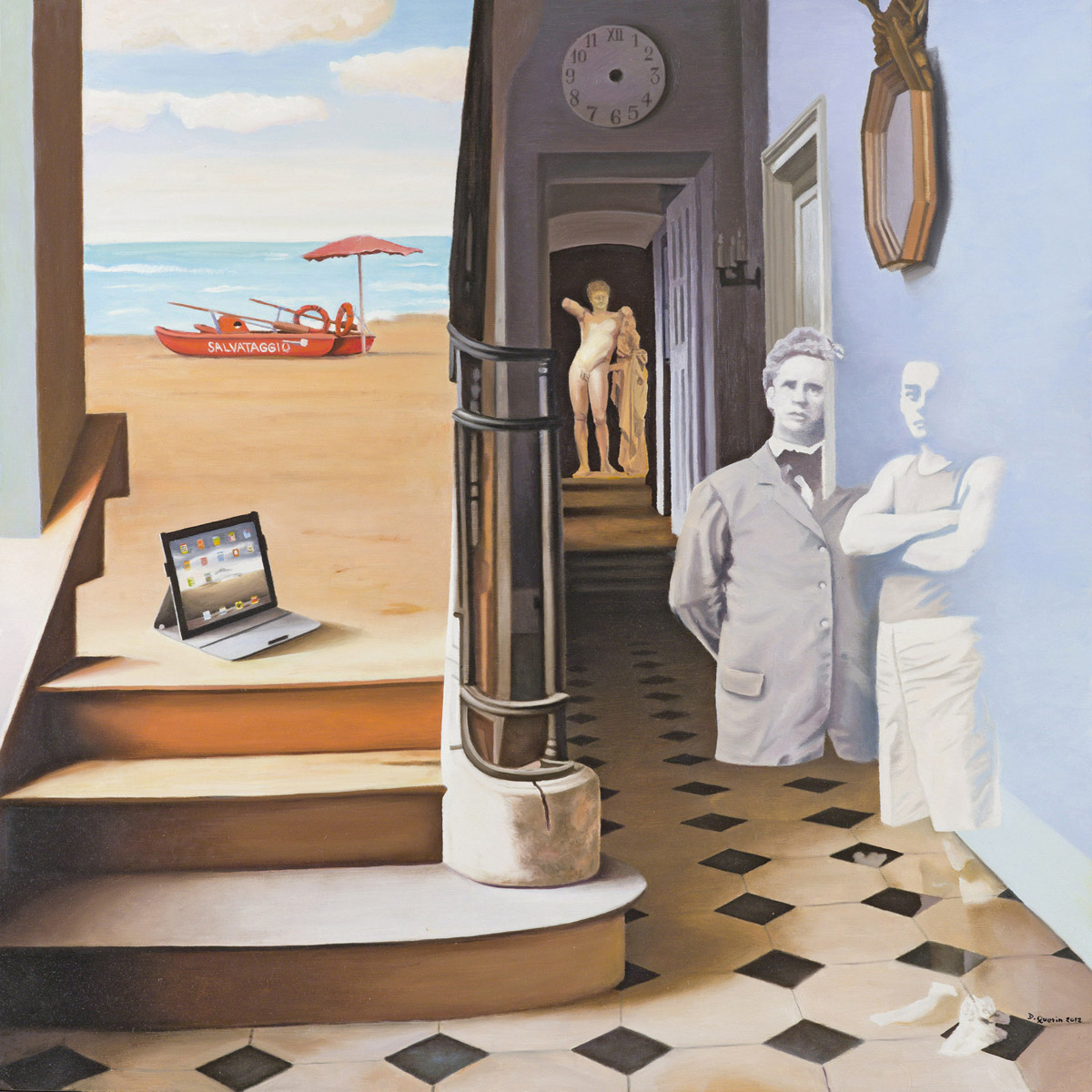Hailing from an artistic family, Rome-based painter and illustrator Davide Querin (born 1962) creates highly detailed, psychologically meaningful scenes in fairly limited square canvases. Though dense, the compositions never seem cluttered or chaotic. Employing gestalt principles, the artist manages to superbly pack up and fold multiple locations and moments in a single frame.
Davide attended ISIA Urbino, the Higher Institute for Artistic Industries, and graduated with a degree in Graphic Design, Editorial and Advertising Illustration in 1986, presenting in his final dissertation the illustrations of Mikhail Bulgakov’s The Master and Margarita.
Here he talks about his fascination with Argentinian art, the symbolism in his work, his mental processes and his thoughts on space and time.
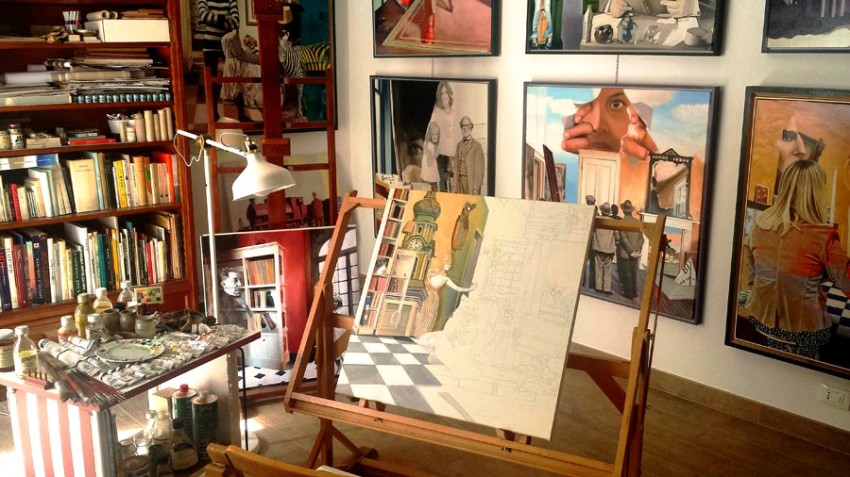
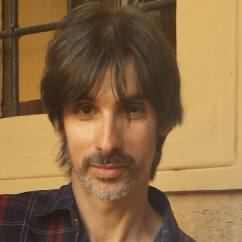
How do you get the ideas for your paintings?
My paintings, which at first glance appear like a dreamlike fusion between the real and fantastic, actually are the result of a more complex relationship between the conscious and the unconscious, which I have refined over time. We know that while we sleep the unconscious plays a fundamental role by elaborating a complex network of information that, properly codified, returns to our attention as a response to our profound questions. Clearly, “unconscious” is a general term that I use for synthesis, since every individual is the sum of many deep aspects that in different cultures assume different names and meanings.
Before I sleep , I almost always revisit the spent day and while I observe it, I bring to light various aspects of myself, including those about which I wish to have a clearer vision. Since childhood, I have always had the ability to live with a certain degree of awareness during the sleep, up to the point when the images that dreams send me back (images that I prefer to call experiences), are so vivid as to seem real. So real as to not dissolve when I have awakened. And it is from here that I draw the material for my painting.
I take these images that I see lucidly, I interpret them, rationalise them and put them on canvas. The transparent figures in my paintings are not ghosts, but my way of representing the temporal overlaps as they appear to me.
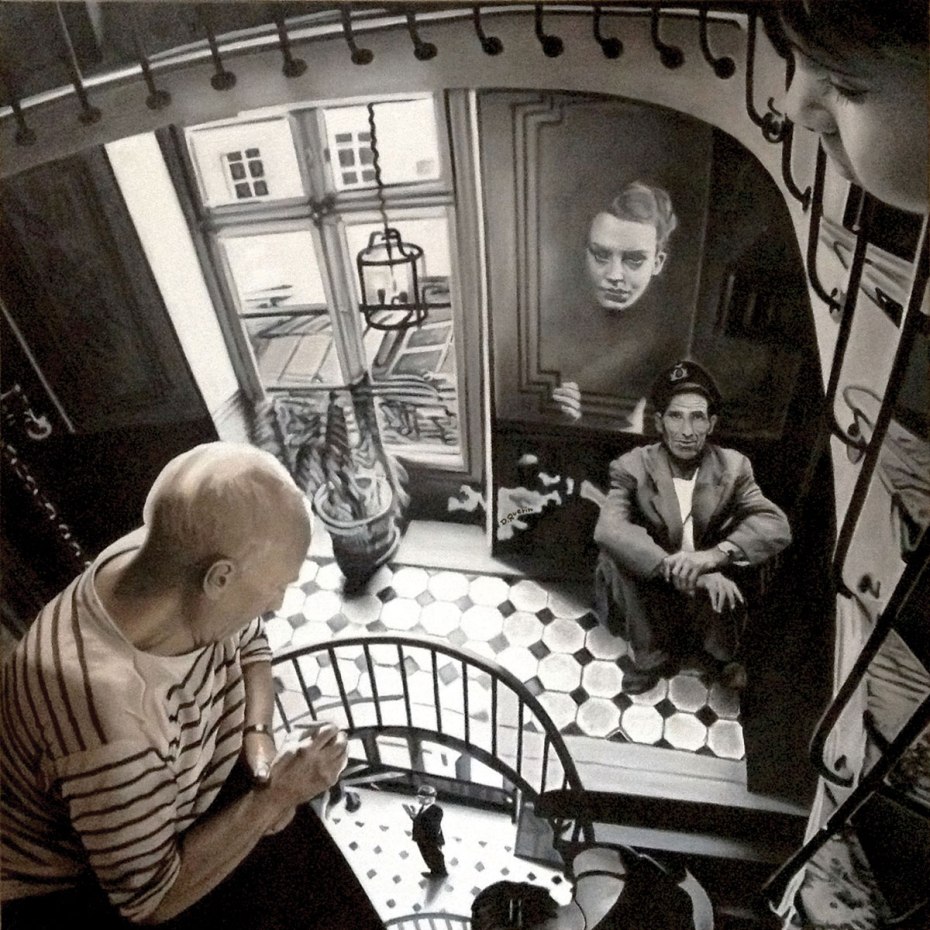
On your site, you mention several Latin American, particularly Argentinian, artists as inspirations—Quinquela Martin, Thibon de Libian, José Arato, Juan Carlos Castagnino, Xul Solar, Raúl Soldi. What is so unique about them in terms of subject matter and technique? I mean, is there some quality you find in their art that is absent from European and North American visual artists?
The value of European and North American artists is indisputable, but the Argentinian artists in the first half of the 20th century had the ability to express in a unique way the melancholic—but never sad—atmosphere typical of their place. The old districts of Buenos Aires still ooze the nostalgic memory of the early 1900s, but at the same time they transmit a sense of contemporaneity. I found the same emotional tension in the paintings of those artists and I was fascinated by them.
Let’s not forget that in the 1920s, almost 50% of the population of Buenos Aires was comprised of European immigrants, many of them Italians, therefore the Argentinian painting of those years had deep European roots in it. When I was in La Boca in 1995, I saw the works of Quinquela Martin in his house/museum. I was deeply moved. Carlos Alonso is another painter who has greatly impressed me. His paintings, permanently displayed at the Fortabat in Buenos Aires, are extraordinary. In any case, these are almost totally unknown painters in Italy and in Europe, whom I could never have discovered had I not gone to Argentina.
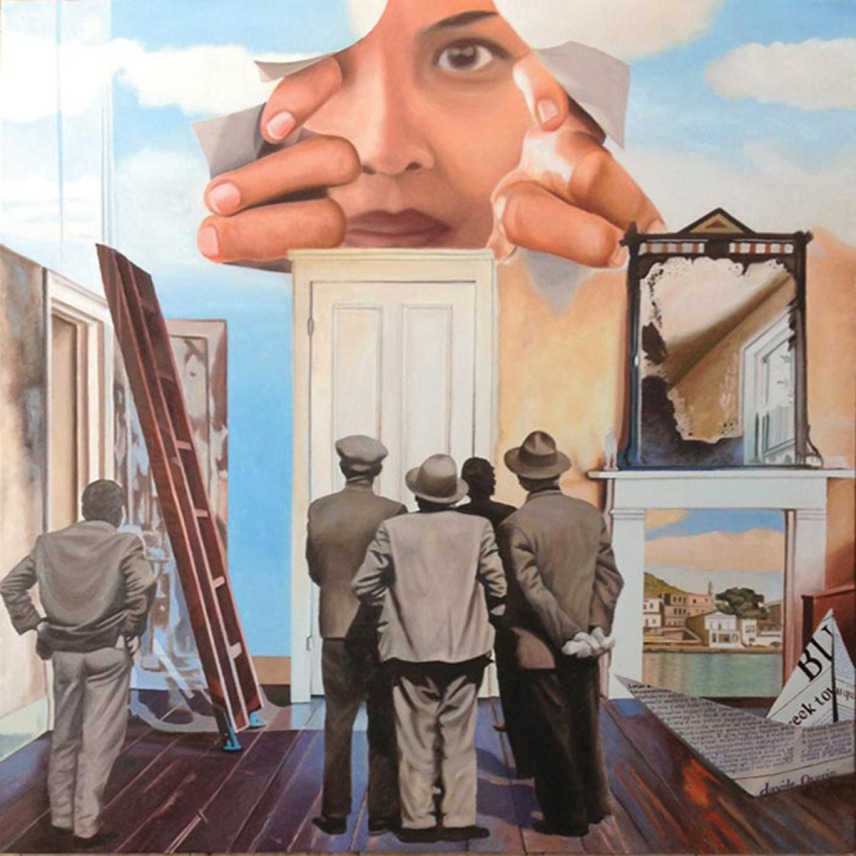
If you had to describe your themes in about five words, what would they be?
The circularity of time and space.
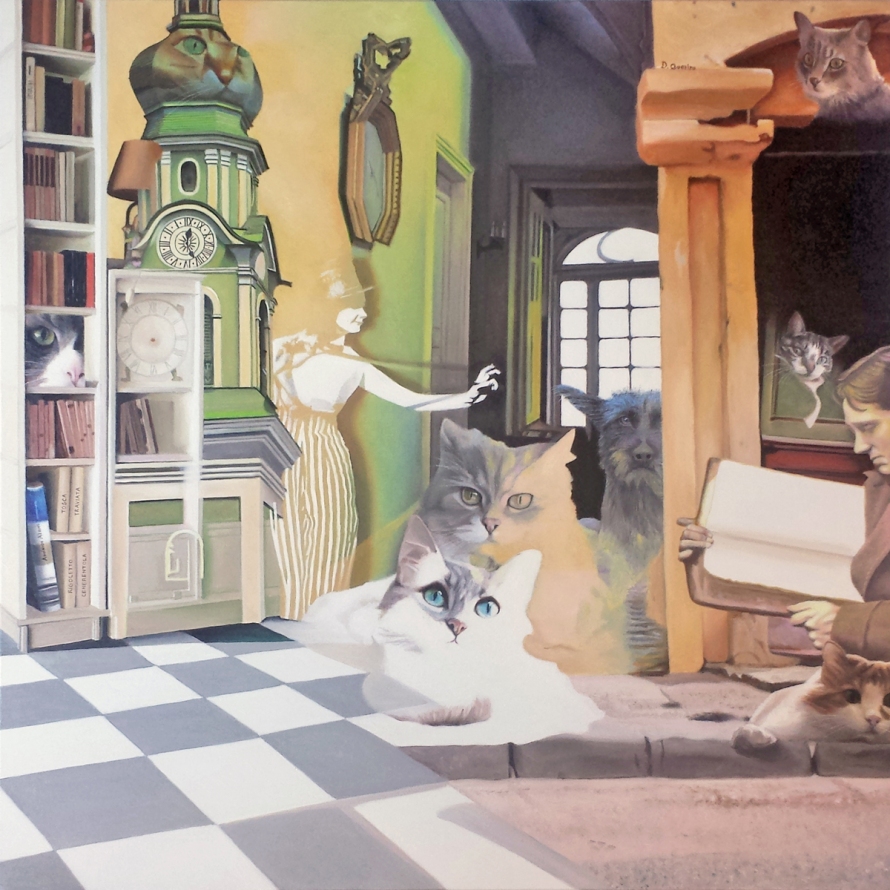
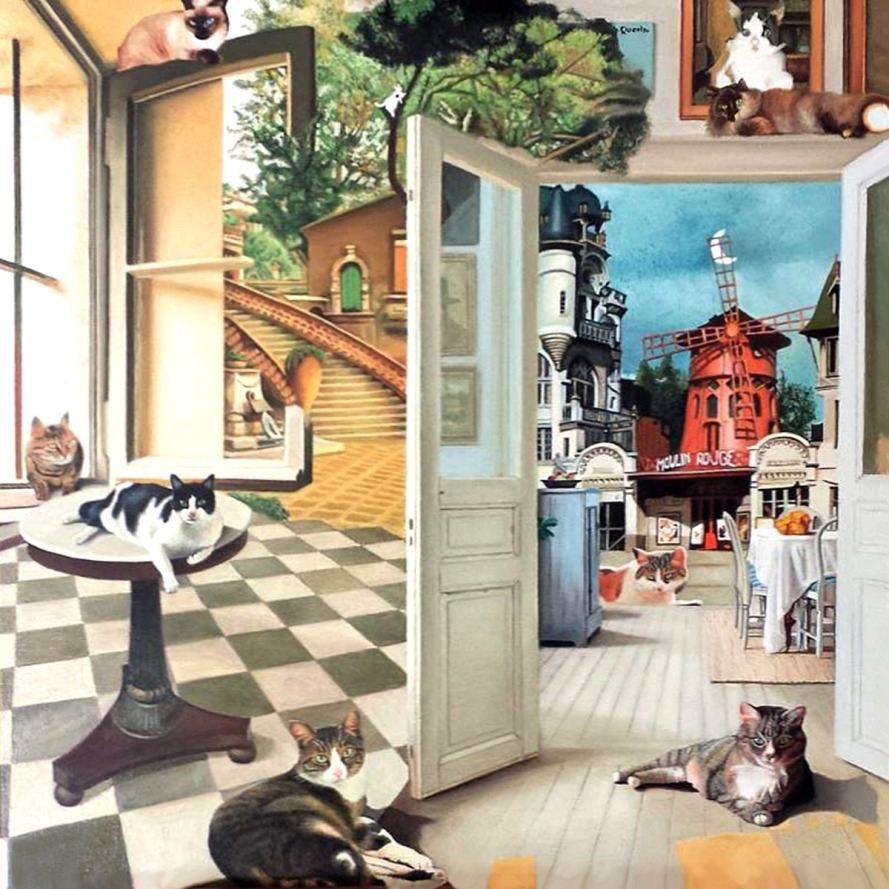
I have seen the chessboard print and cats in a number of your paintings. Do they stand for anything? Have any special meaning?
Before starting to paint a picture, I prepare the layout with great care and study every detail. All the elements present in the composition, including the lights and the tones, have a precise meaning and are functional to the general meaning of the painting. I work with iconic language a lot. I use symbols as if they were the letters of a word or the words of a sentence. It so happens that I end up using the same symbols in different paintings, just like the same word could be used in different sentences.
The checkered floor, for example, stands for dualism, the concrete choices that man makes in life, the division between superior and inferior natures. White and black is also positivity and negativity. The square shape of the chessboard is matter, the number four (the four sides of the square) in numerology represents all that is solid and tangible. In some paintings, such as in “Micioni” and “The Magical World of Cats”, cats are the theme specifically requested by the client. But usually I use the cat as a symbol of freedom and protection from danger.
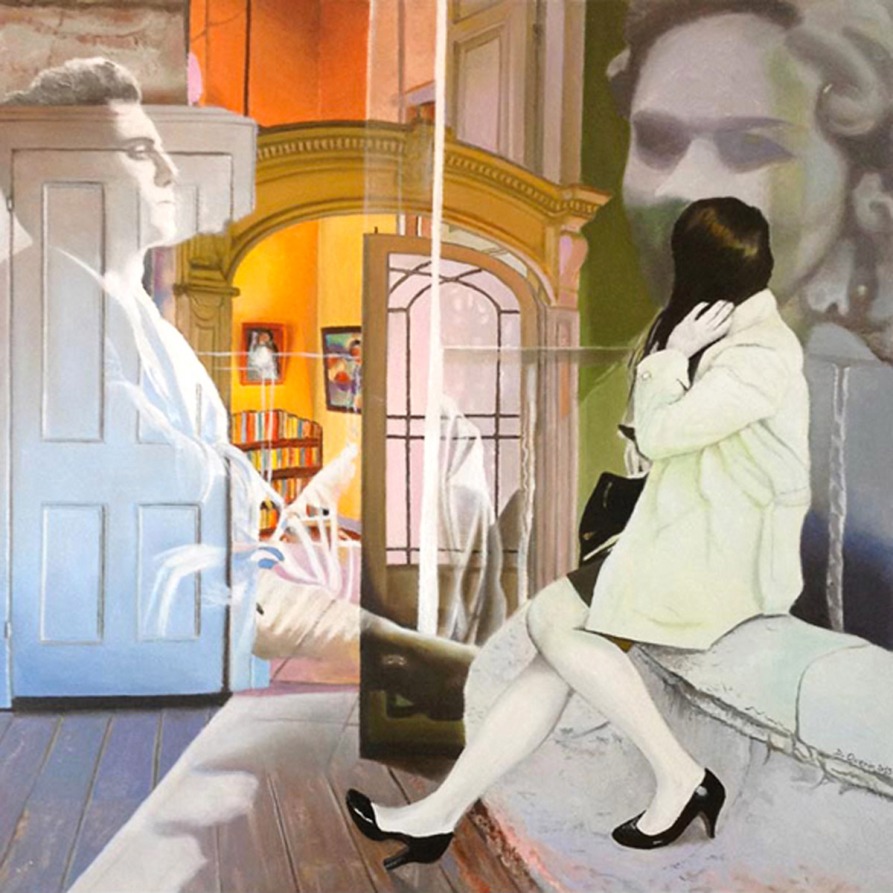
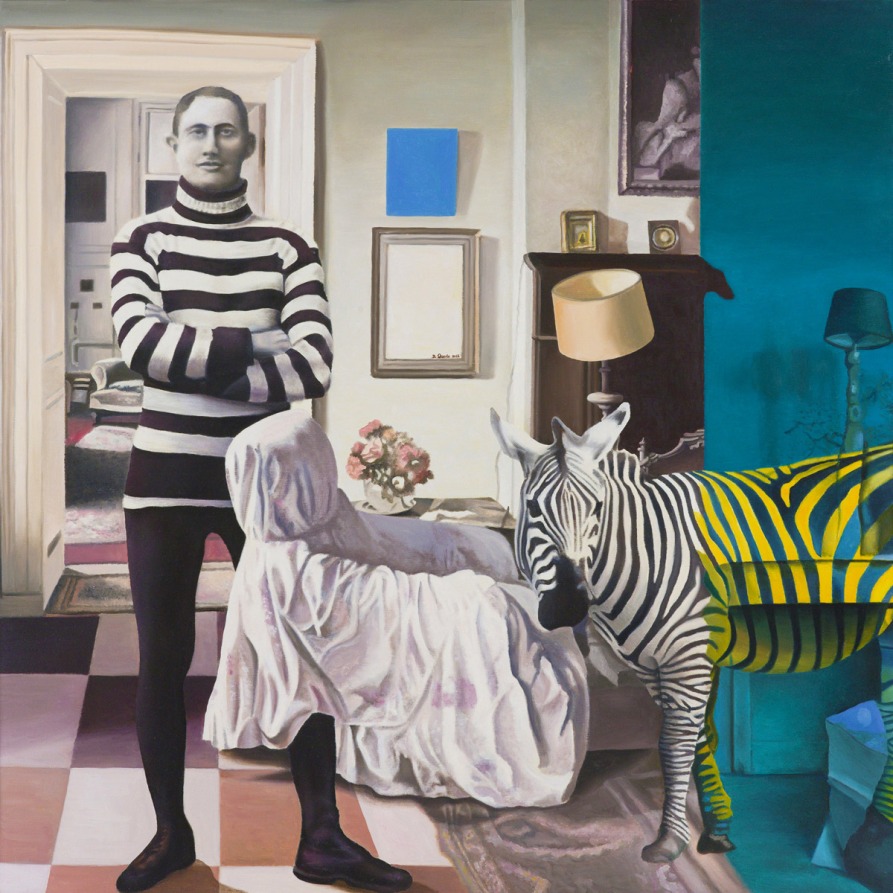
Your artworks contain multiple layers. Certain objects and individuals are coloured and opaque, others thin and grey. I feel as though the past and the present are in constant conversation. Personally, are you somebody who is haunted by memory, who is attached to history?
I am not nostalgic and I do not live my life with my gaze turned to the past. On the contrary, I feel myself suspended in a non-time. I think that space and time do not themselves exist and that they are just a temporary work environment that allows living beings to evolve. In and Out, Before and After coincide. Everything overlays one time, in one space, always. I do live this condition myself, I feel neither young nor old, but only suspended in “existence” and I try to return to this dimension I live in in the paintings that I paint.
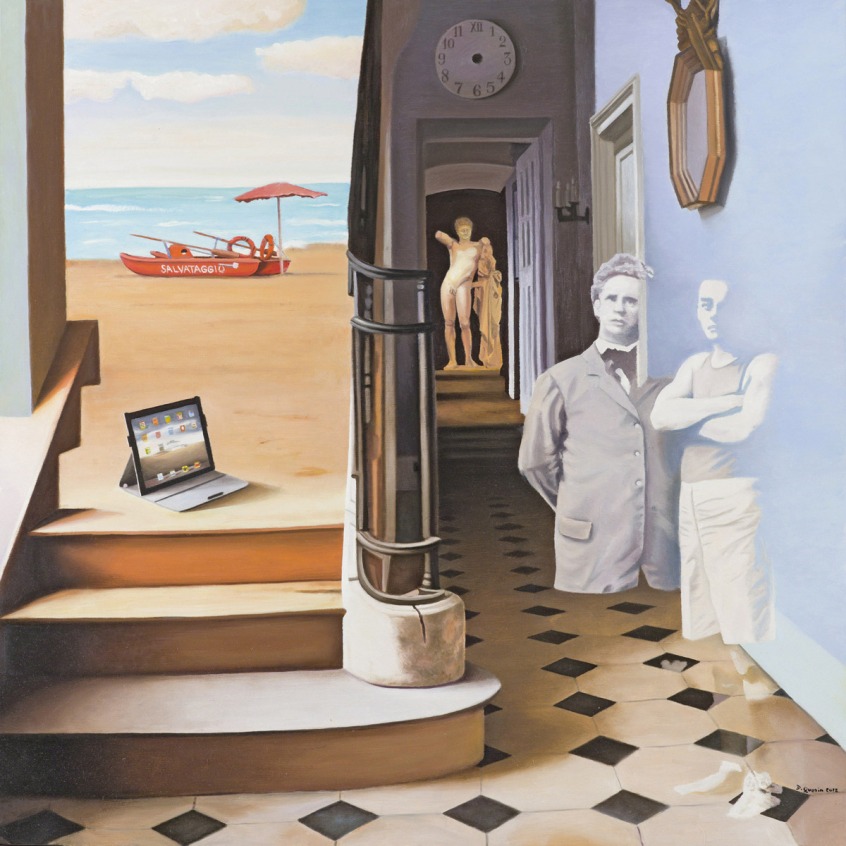
In Parallel Dimensions, we see an iPad near a couple of steps, a classical sculpture at the dark end of a corridor, shadows of two men and an orange lifeboat in the distance. What’s happening here?
This painting depicts two parallel paths: on the right, a corridor with a statue of the classical period that represents our history and our Western culture, the tradition and profound values of classical art, our solid cultural roots. Further on, in the foreground, two characters from the early twentieth century appear, they represent the continuity of these concepts, but with an element of loss, symbolised by the transparency of their lower limbs.
On the left, a ladder that rises. This staircase should have six steps, but it shows only three. The presence of the steps means that man, after thousands of years of history, should rise in self-consciousness and evolution and be better than what he was 2000 years ago, but it has not turned out that way. Three steps because three is the number of inner balance and perfection, but today there is only perfect technology, represented by the iPad. Then there is the open sea without islands or distant lands in sight, probably an uncertain future to face. On the beach there is a lifeboat to be used in the worst case scenario, the shipwreck. At the top, there is a clock without hands, because the whole scene takes place in the non-time.
All those who have seen this painting missed the presence of an optical effect: the bases of the door jambs on the right are not on the same perspective plane. I have used this optical effect to say that our past and our present seem to be separate in space and time, but coexist on the same plane, just as the whole scene of the painting, that, while representing different temporalities, coexists on a bi-dimensional canvas and in a single square-shaped area.
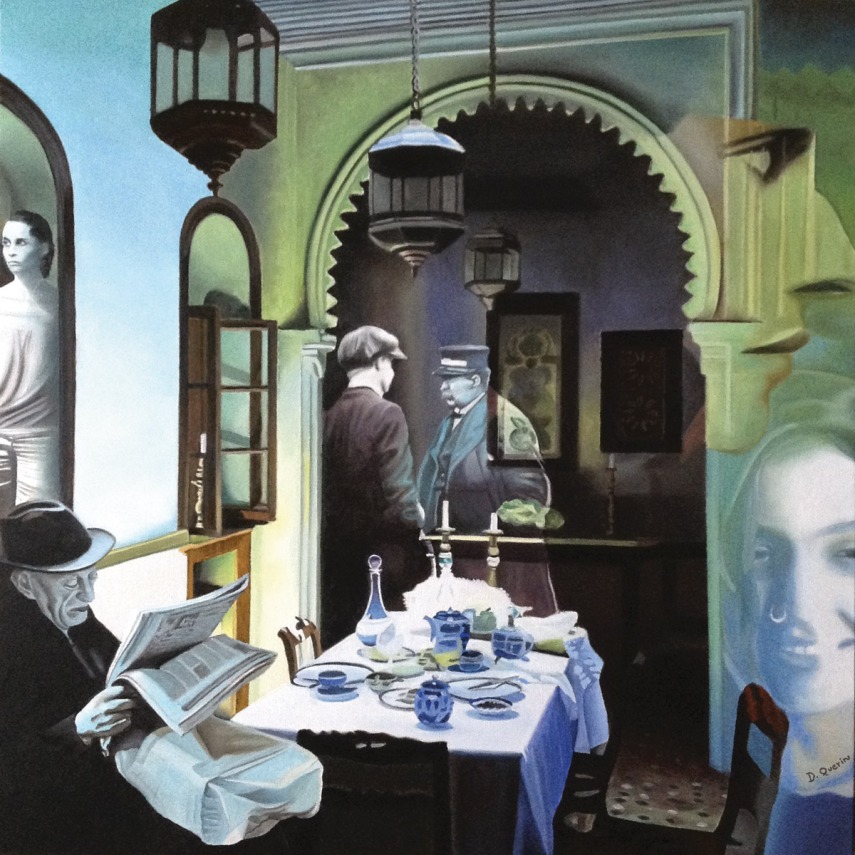
Natura morta a lume di candela is another piece that is very appealing. The composition, the shades, everything is attractive. What is the story behind this one?
It is a visit to a deep region of the unconscious where everything endures side by side, our past, our history and all those who live in our memory. The elder who reads is the experience, who knows everything because it reads what happens inside us. The two railwaymen, the young and the old, are those who lead the train, a symbol of our journey of life. The profile of a Hellenic woman at the top right represents our profound intuition. Everyone sat at the table and ate dinner talking to each other. Jung would have considered it an excellent result.
Who are your favourite surrealists?
I have always considered Paul Delvaux an extraordinary surrealist, but I have love the atmosphere and the colour palette of two painters who do not belong to Surrealism: Balthus and Degas. Despite these preferences, I have never tried to look like any of them.
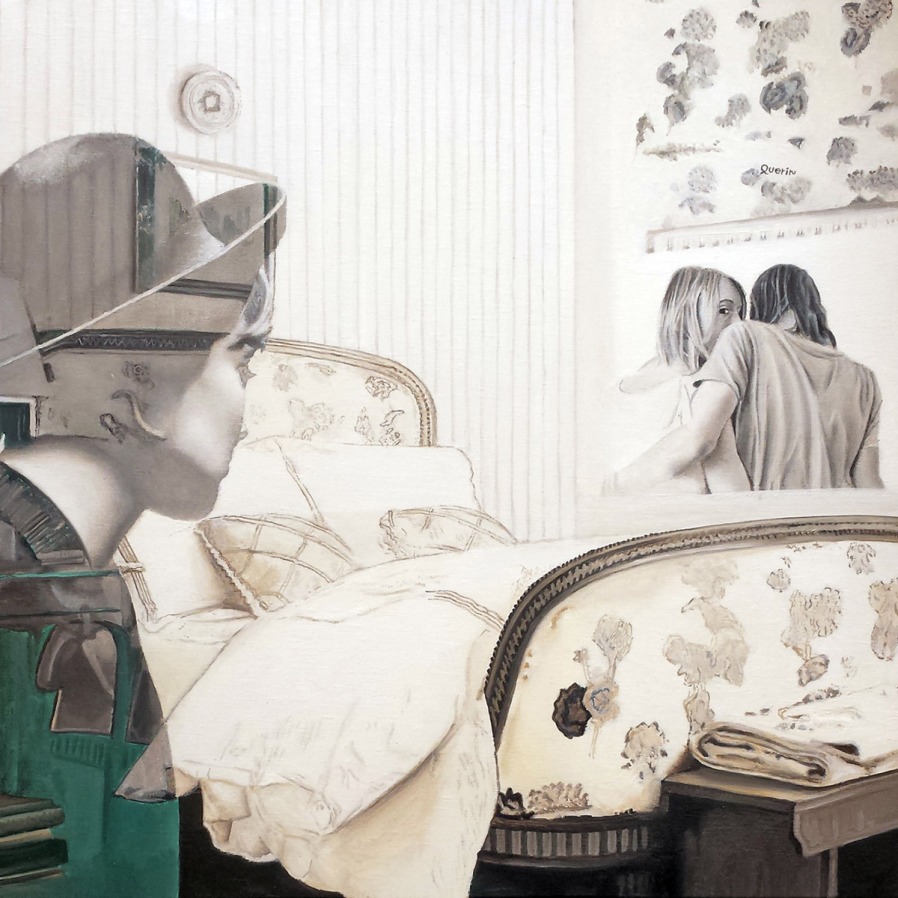
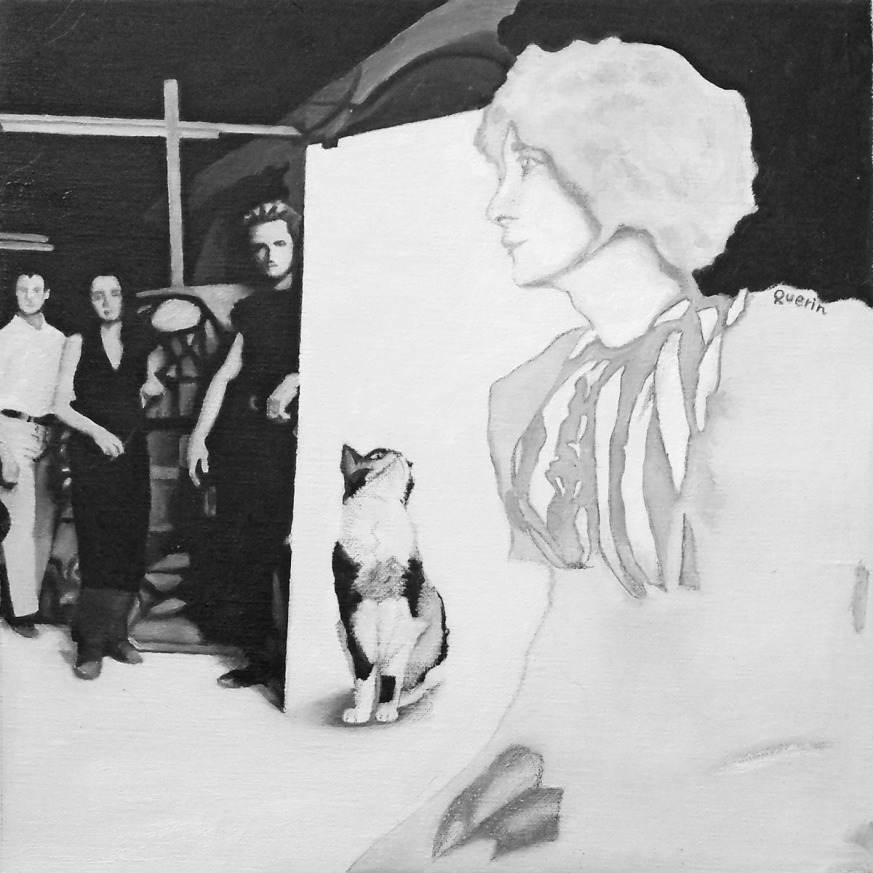
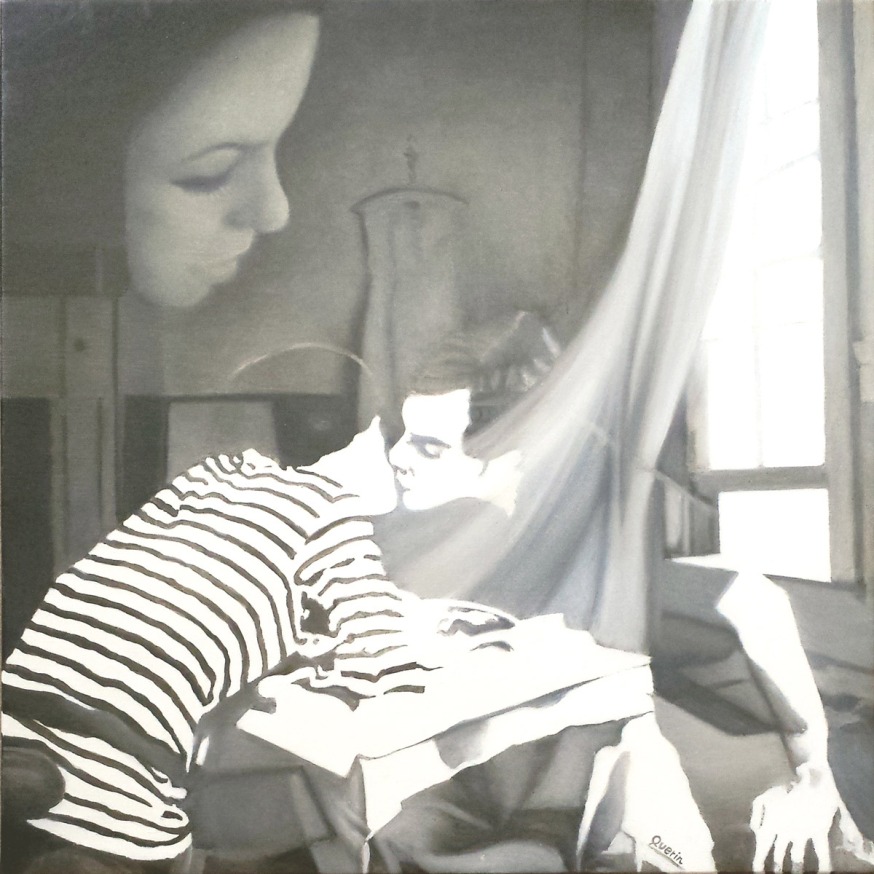
Some of your works looked very cinematic to me—Ciascuno per la propria strada, Ridammi le vibrisse, Nel silenzio—which brings me to the question, are you in any way influenced by movies, especially the Italian film industry which has given us such talented figures over the last century?
It’s true, many of my works, not all of them though, have a cinematic cut. Each piece is a frame of my inner life. Through meditation, I send conscious signals to my unconscious. As I have mentioned, lucidly during sleep at night or early in the morning in a half-awake state, I have visions that I often translate into paintings. These visions are most often shots of the movie of my own life.
Your scenes are set inside houses (and posh ones). You repeatedly display lamps, bookcases, shelves, staircases, chairs, tables, doors, windows, beds. Why do you choose interiors over exteriors?
I have painted about 150 oil paintings and I never did a statistic on the use of interiors versus exteriors. Very often I mix an interior with an exterior, or I set a scene in an interior, but always with doors and windows, most of the time open. The interior of the house symbolises the ego in one’s own body, the exterior the communication with others and the ego’s relationship with the world. An elegant interior, well furnished and well lit, with windows and open doors, represents a harmonious, joyful and communicative self.
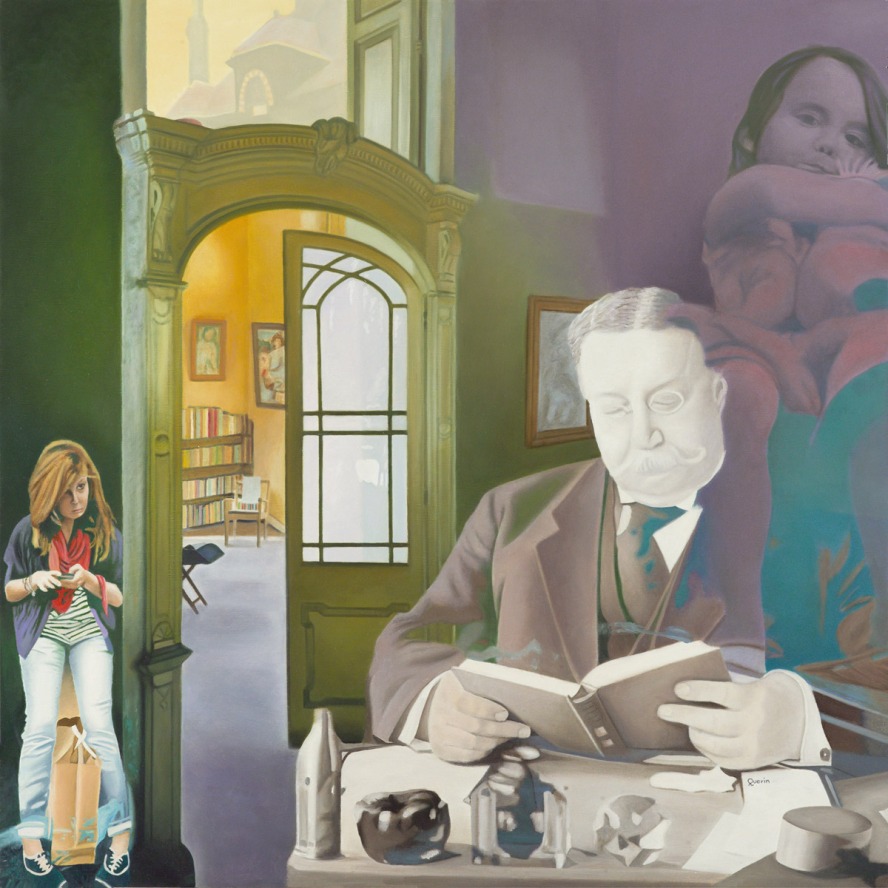
You grew up in an artistic family in an artistic city. What were your childhood and adolescence like? Who were your heroes then?
My childhood and adolescence were complex, I had to face many difficulties. Art helped me survive and solved my problems. I grew up among art books, in the cradle of classical art, and in Rome, which in the 60s was a splendid city. The heroes were there, but they were silent. They would appear later.
Which work of yours do you love the most?
Everything that involves creativity excites me. I also have a past as a non-professional musician behind me. I even designed and built almost all the furniture in my apartment. But the answer is: painting, without any doubt. I live to paint and paint to live. If you are asking which painting I love the most then I would say…the next one.
Do you have any major events coming up in 2018?
Yes, an important exhibition is being prepared on the theme of La dolce vita by Fellini, which will be inaugurated in Rome and then in Paris. I will exhibit 16 large-format oil paintings on canvas.
You can find Davide on his website (www.davidequerin.com), Saatchi Art (www.saatchiart.com/davidequerin), Facebook (www.facebook.com/davide.querin) and Instagram (www.instagram.com/davide_querin).
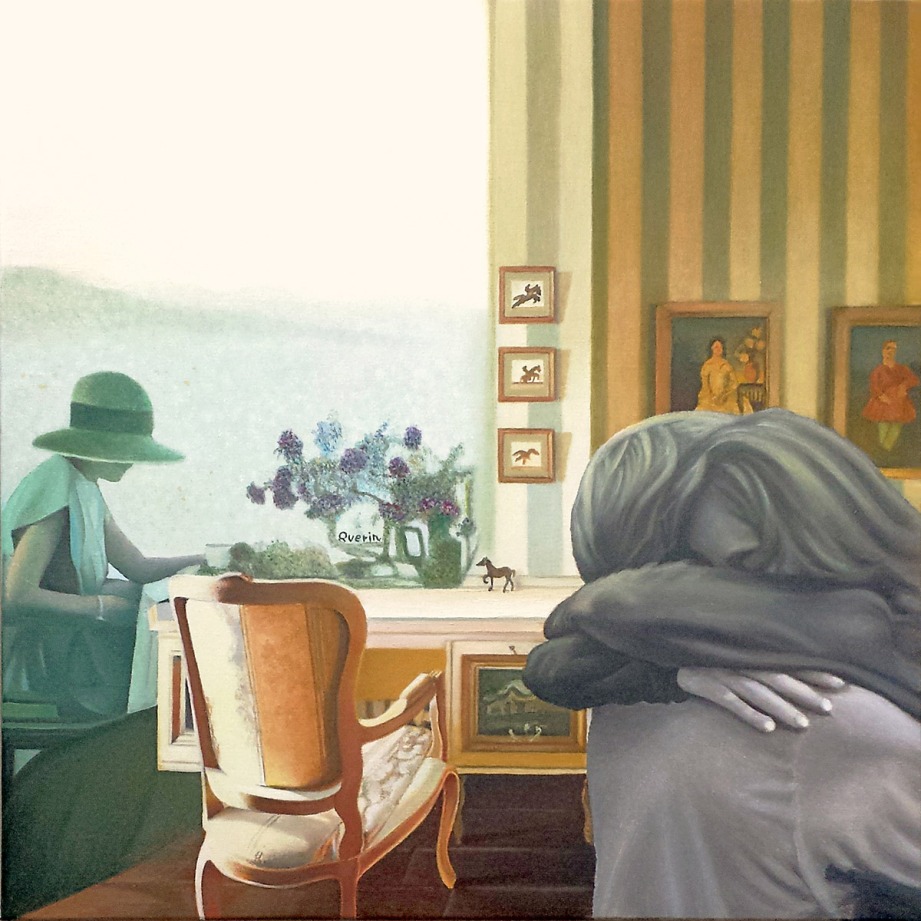
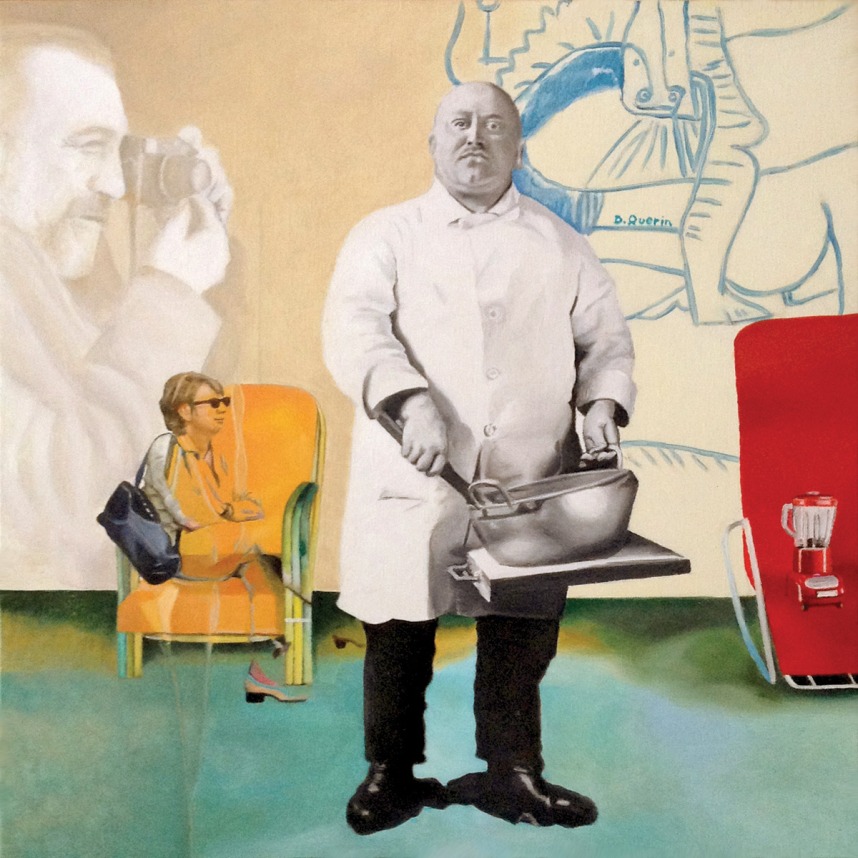
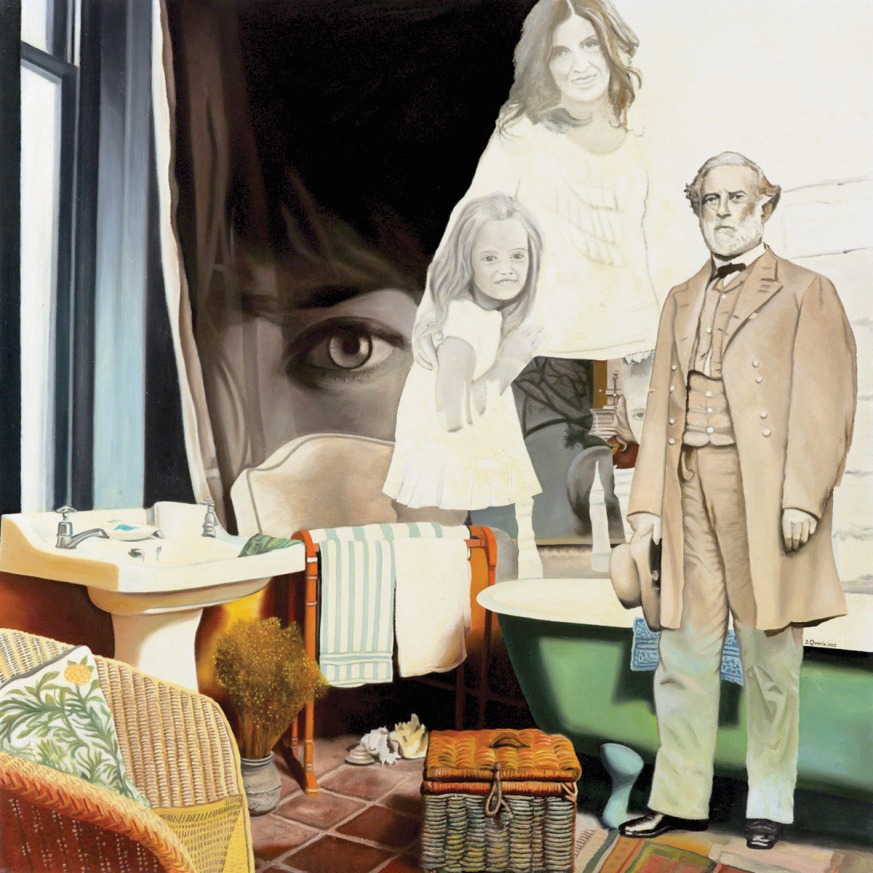
![]()
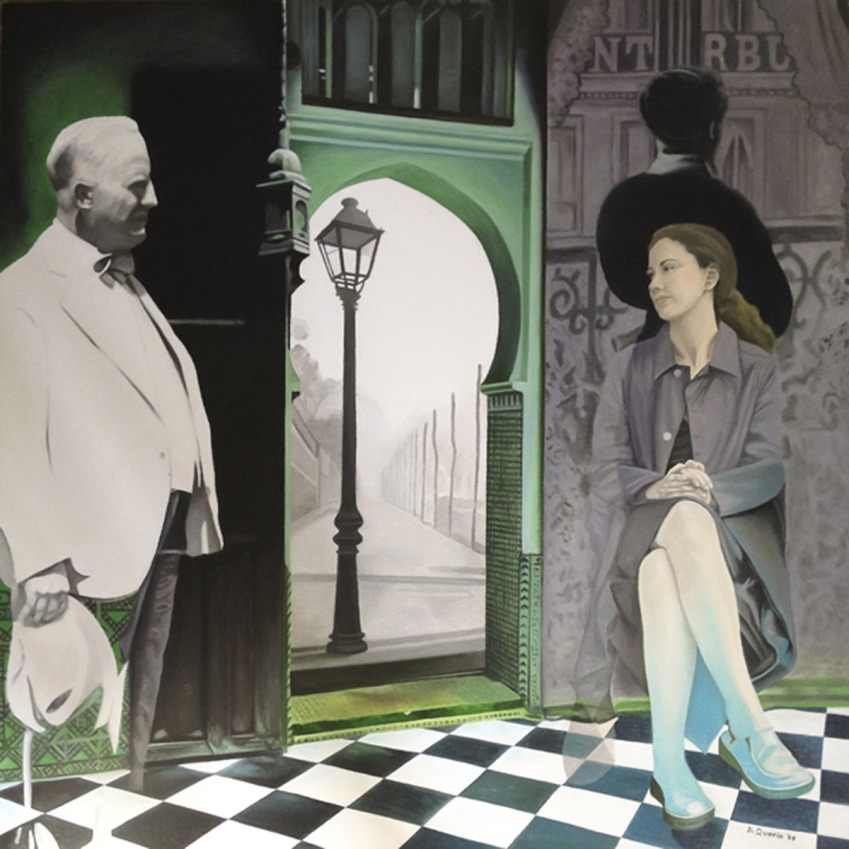
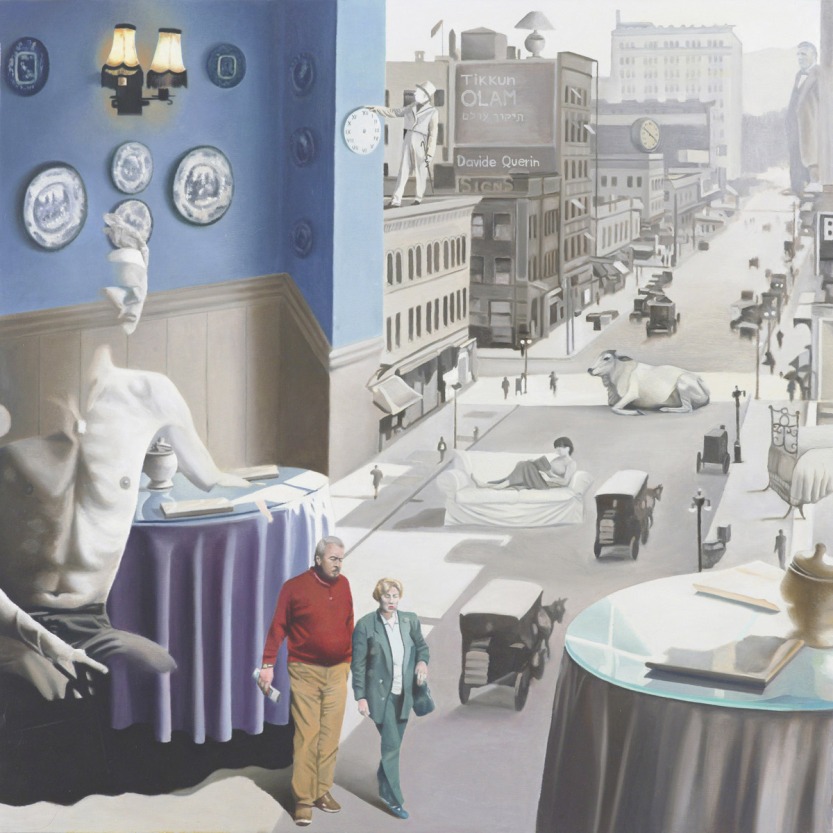
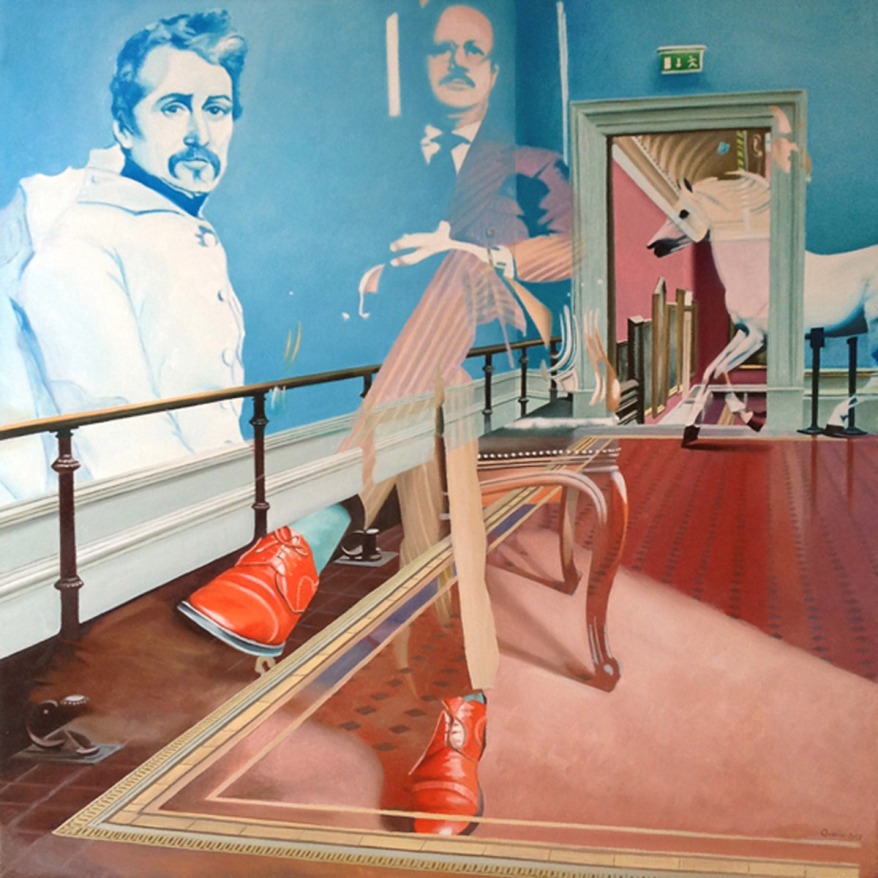
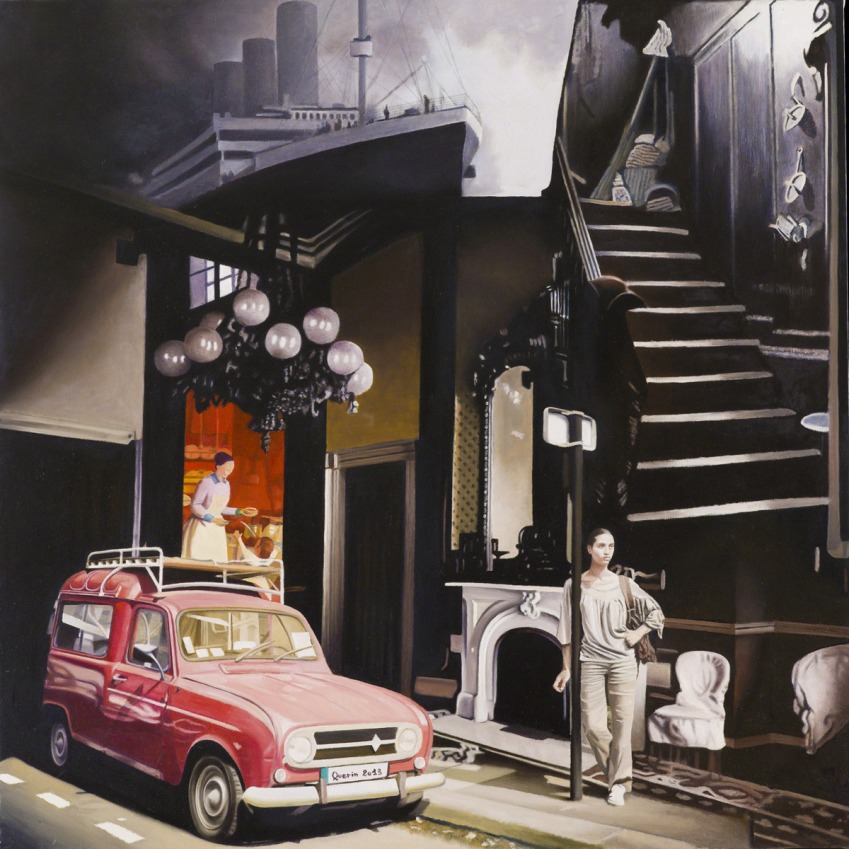

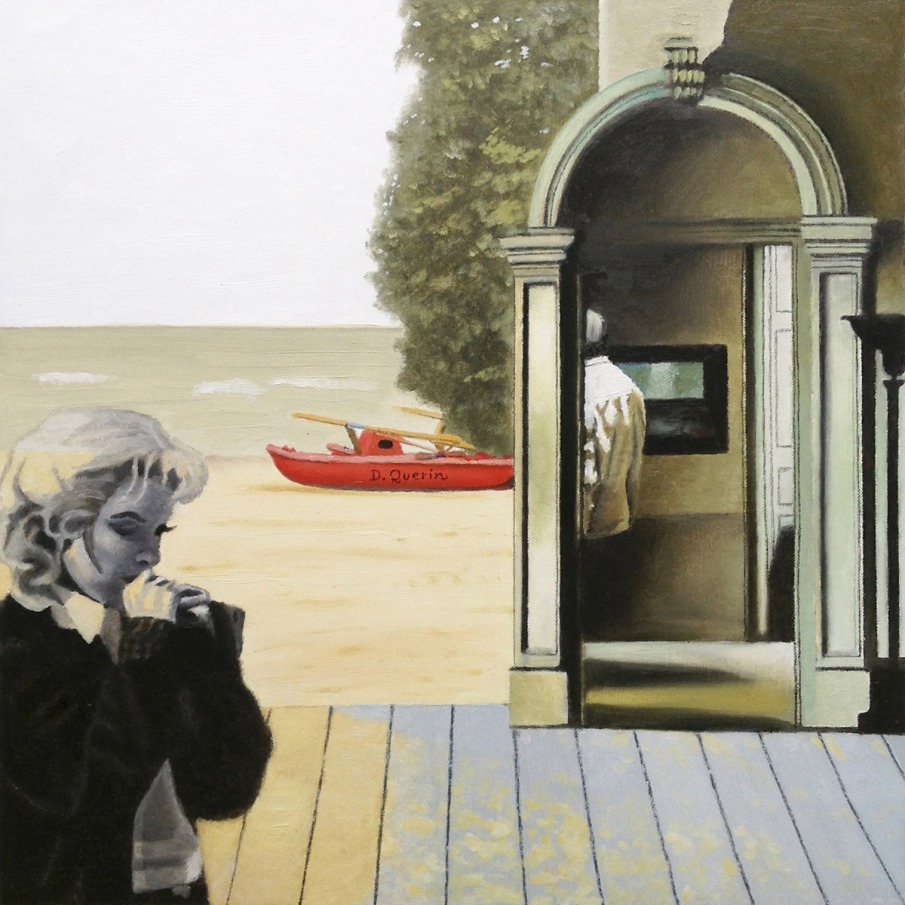
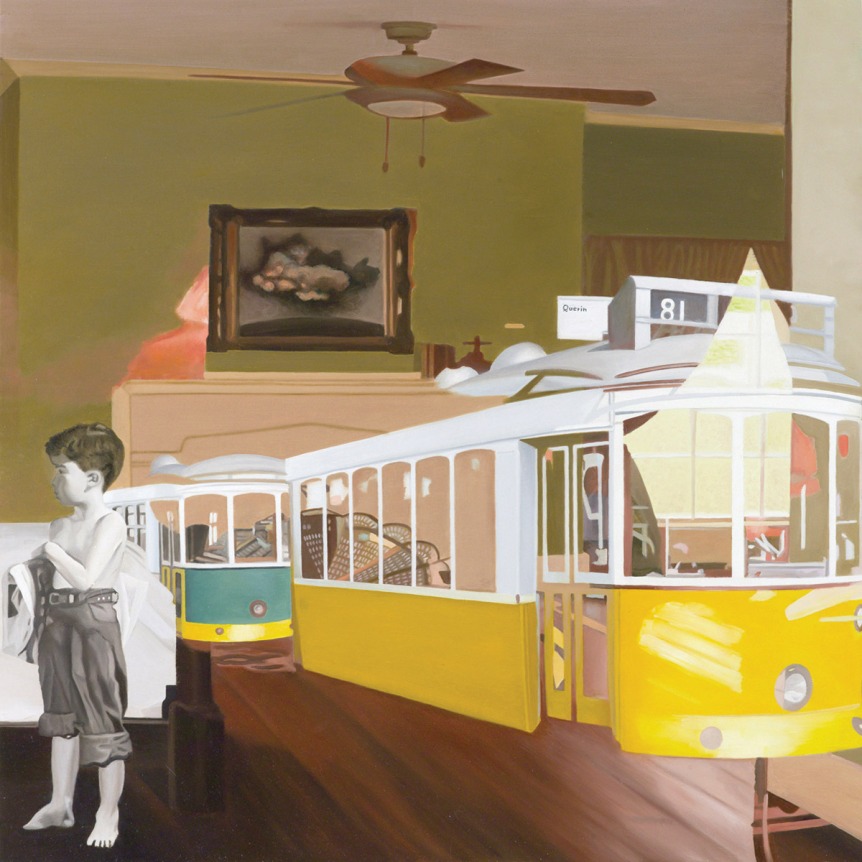
![]()
